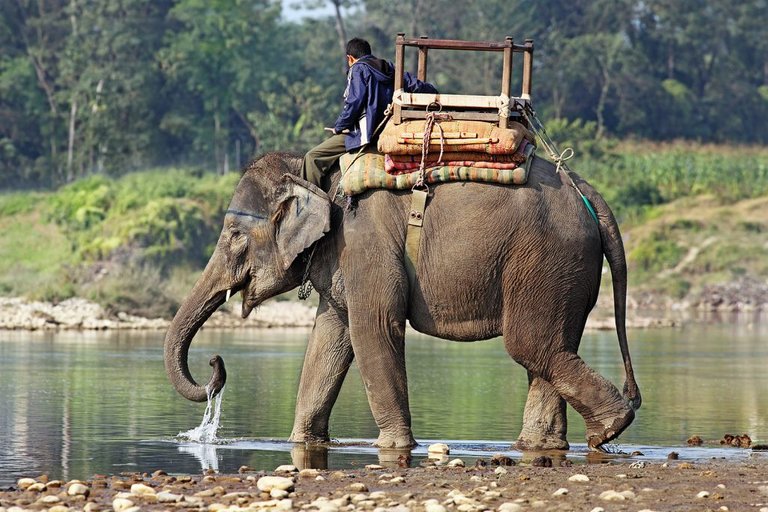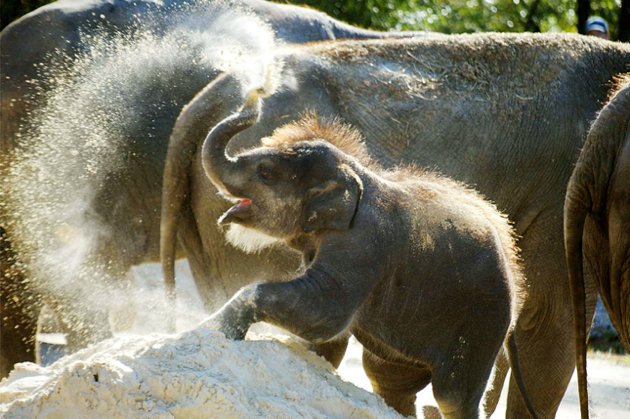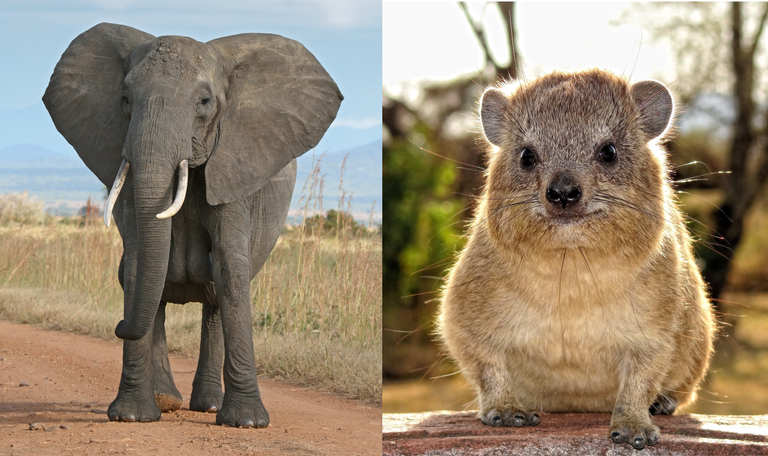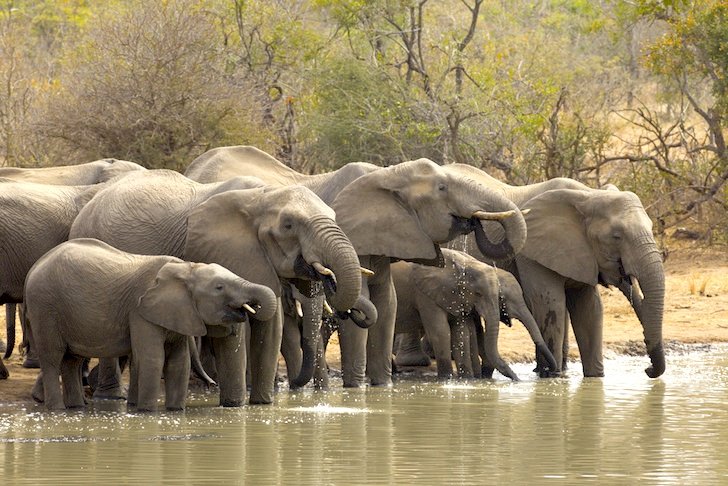There are two kinds of elephant living today. One is called the Indian elephant, although it is also found in forests throughout south-east Asia. The other is the African elephant, now found mainly in tropical Africa.
The Indian elephant is the smaller, up to 3m in height and weighing up to 4 tonnes. It has smaller ears than the African. Its forehead is high and domed and there is only one lip at the end of its trunk. It has five nails on each front foot and four on each hind foot. Its trunk is smooth and its back is ridged and convex. Only the male has tusks and even these are small. This is the elephant usually seen in zoos and it is the one that is tamed and used for dragging heavy loads.
The African elephant is up to 3,5m high and weighs up to 6 tonnes. It has large flapping ears, its forehead is sloping and there are two lips at the end of the trunk. It has four nails on each front foot and three on each hind foot. The trunk is ringed and the back is hollow (concave). The males and females both have long tusks, up to 2m long.
The useful trunk
An elephant’s long trunk is really its nose. Its eyes are very small and it has poor sight, but its sense of smell is very good. It also uses its trunk rather like a hand. It can grasp food with its trunk to put into its mouth. It can suck up water with the trunk and squirt it into its mouth to drink or spray it over its body to take a bath. It will also use the trunk to suck up dust to blow it over its body, to take a dust bath.
Tusks and teeth
Its tusks are elongated incisor teeth growing from the upper jaw. They are used to attack enemies. They are also used for levering up small trees, digging up roots and boring into the ground for water. Other than these, an elephant has only a simple large molar on each side of both upper and lower law. An elephant’s food is tough: leaves, young branches and ripe fruit. These are hard on the teeth. As the first molars wear out they are pushed out by others growing behind them. This happens five times during an elephant’s life, as if the molars were on a conveyor belt system. When the last molars are worn out the elephant can no longer feed and so will die. This usually happens at about 50 years of age.
For hundreds of years, in India and south-east Asia, elephants have been tamed and used as beasts of burden. An elephant may live for 70 years, so the man who trains it will probably ride it all its life:

An elephant’s trunk has many uses. This baby elephant (the hairs on its skin show very clearly) is spraying itself with water to keep cool. With its trunk it can smell ripening fruit a mile or more away and it can suck up water for drinking:

There are four species of hyrax. They are also known as dassies, coneys or rock-rabbits. They are found from Syria and Arabia to South Africa. About the size of a rabbit, a hyrax looks like a kind of rodent, but it is really an ungulate. Even more surprisingly it is probably distantly related to elephants:
The closest surviving relative of the dugong is the manatee, a fresh-water, New-World version of itself. Apart from this, and the fact that there are two species of elephant and several of hyrax, it's absolutely true. Hyraxes, elephants and dugongs evolved from a single common ancestor.
Source

Elephants at a waterhole in Africa. The largest land animals now living, elephants are related to the long extinct mammoths and mastodons:

Resources and extra reading:
Indian Elephant | African elephant | Elephant | Elephant trunk | Tusks | Hyrax

@skfrink plz 1 vote give me sir...plz